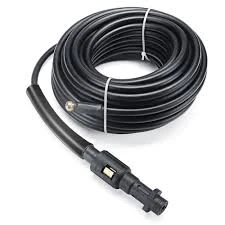High-Quality Pipe Couplings for Reliable Connections
Understanding Pipe Couplings Essential Components in Fluid Transportation
Pipe couplings play a crucial role in various industries by connecting two or more sections of pipes, ensuring the smooth transportation of fluids. These fittings come in different types, materials, and designs, each serving specific applications. Understanding the significance and functionality of pipe couplings is essential for ensuring the efficiency and safety of fluid transport systems.
At its core, a pipe coupling is a device that connects segments of piping to create a continuous flow path. This connection is vital in numerous applications, ranging from municipal water supply systems to complex oil and gas pipelines. Couplings can be permanent, such as welded or glued joints, or temporary, allowing for easy disassembly and maintenance.
One of the most common types of pipe couplings is the threaded coupling
. This type features internal threads that allow two pipe ends to be screwed together. Threaded couplings are particularly useful in home plumbing and HVAC systems, where ease of installation and repair is crucial.Another popular type is the slip coupling, which fits over the ends of two pipes and does not require threading. Slip couplings are advantageous in applications where pipes may need to expand or contract, as they allow for slight movements. They are often used in drainage and venting systems, making them a go-to choice for plumbers.
pipe coupling

Socket weld couplings and butt weld couplings are essential in high-pressure and high-temperature settings, such as in industrial applications. Socket weld couplings are designed to fit over the end of a pipe and are welded in place, providing strong and reliable connections. Butt weld couplings involve welding the ends of two pipes directly together, creating a seamless connection that can withstand extreme conditions.
Materials used in pipe couplings vary widely, including stainless steel, PVC, copper, and ductile iron, each chosen based on the specific needs of the application. For instance, stainless steel couplings are preferred in sanitary applications due to their corrosion resistance and hygiene properties. In contrast, PVC couplings are lightweight, cost-effective, and suitable for various non-pressurized systems.
The selection of the appropriate pipe coupling is critical for ensuring the integrity and longevity of the piping system. Factors such as pressure, temperature, fluid type, and environmental conditions must be considered during the selection process. The failure of a coupling can lead to leaks and system failures, causing significant downtime and costly repairs.
In conclusion, pipe couplings are indispensable components in fluid transportation systems across various industries. They ensure that pipes are securely connected while accommodating movements and pressure fluctuations. By understanding the different types of couplings and their applications, engineers and technicians can make informed decisions that enhance the performance and reliability of piping systems. Proper selection and installation of pipe couplings ultimately contribute to safer and more efficient fluid transport, underscoring their importance in modern infrastructure.
-
Ultimate Spiral Protection for Hoses & CablesNewsJun.26,2025
-
The Ultimate Quick-Connect Solutions for Every NeedNewsJun.26,2025
-
SAE J1401 Brake Hose: Reliable Choice for Safe BrakingNewsJun.26,2025
-
Reliable J2064 A/C Hoses for Real-World Cooling NeedsNewsJun.26,2025
-
Heavy-Duty Sewer Jetting Hoses Built to LastNewsJun.26,2025
-
Fix Power Steering Tube Leaks Fast – Durable & Affordable SolutionNewsJun.26,2025

